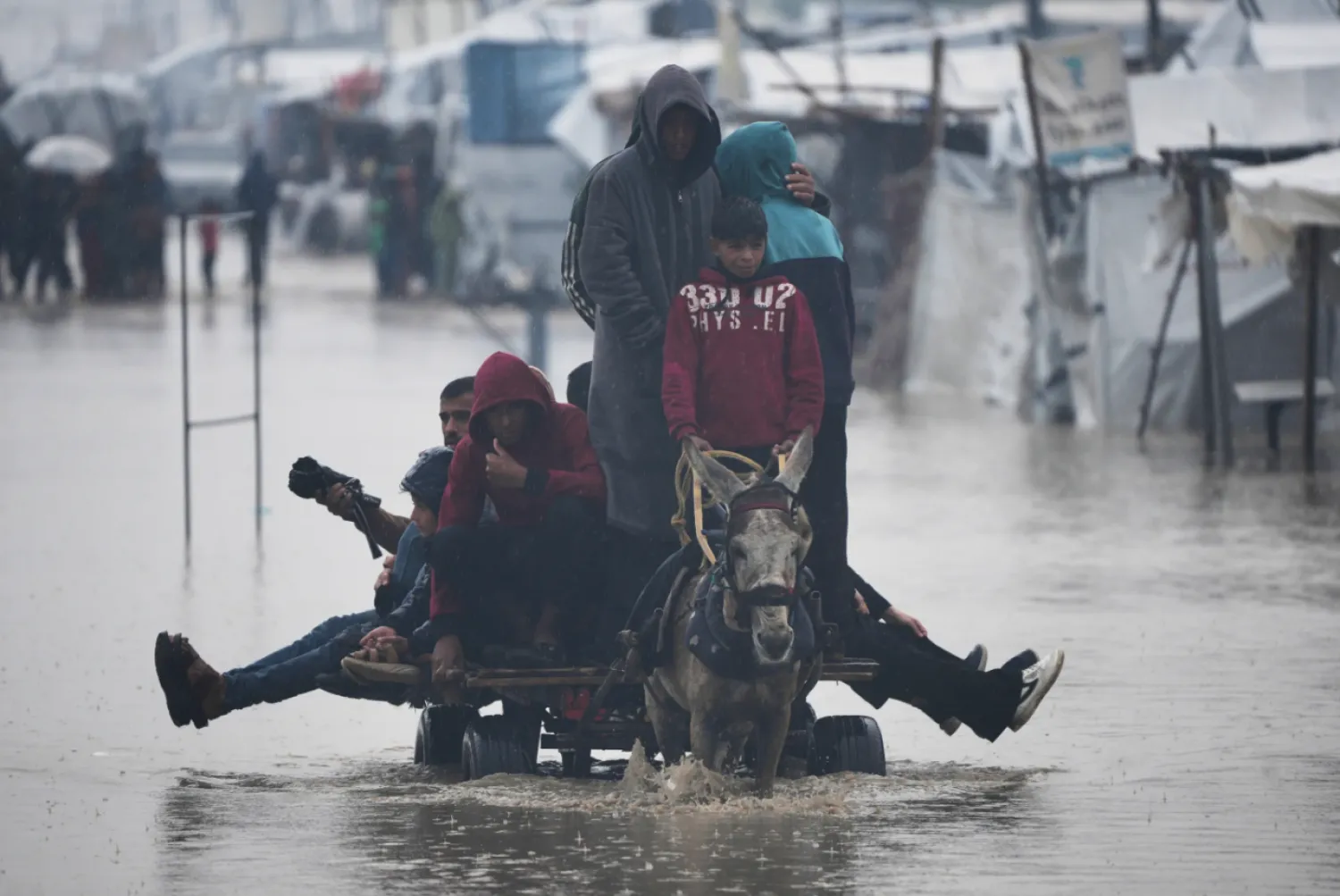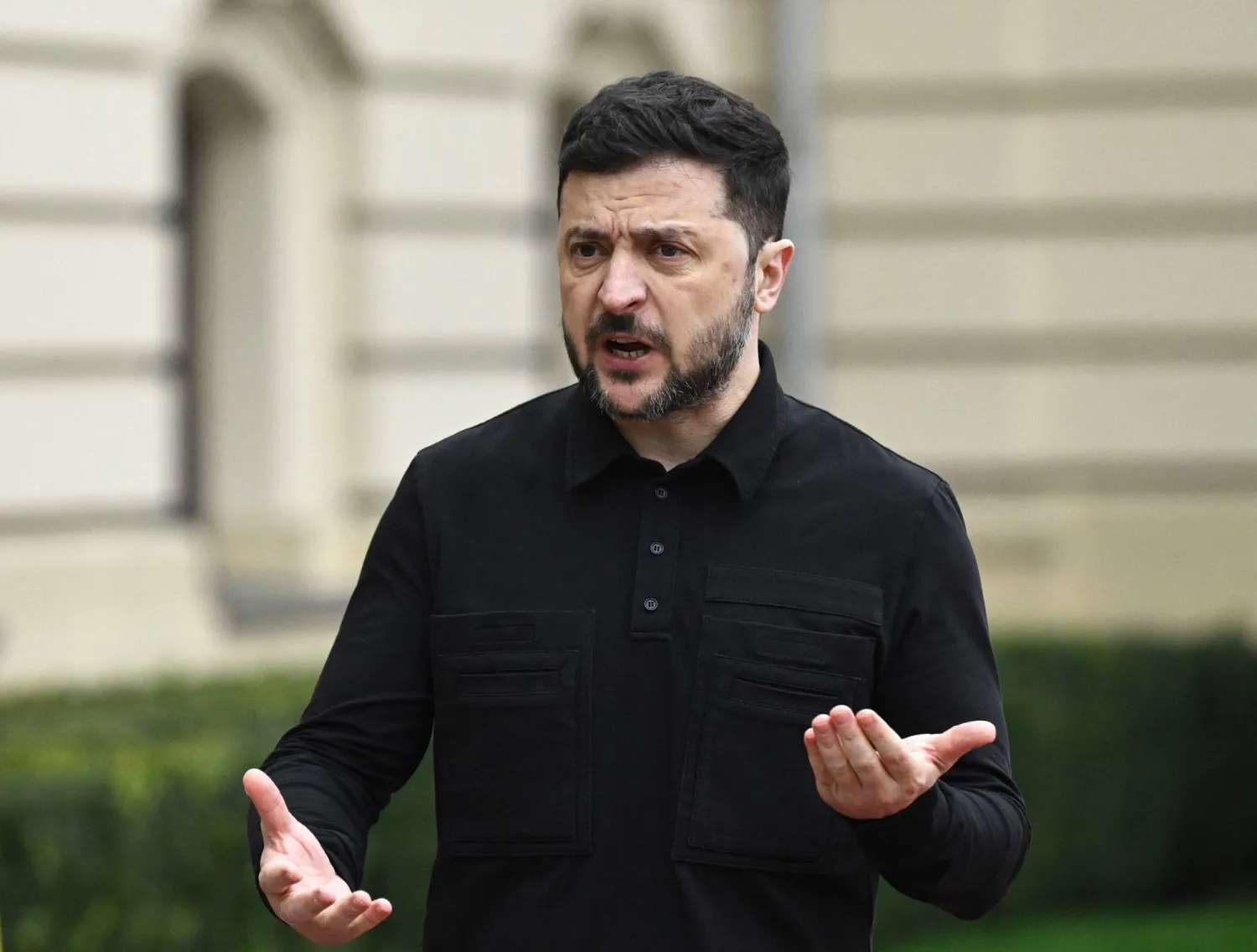By Bilal Shbair, Vivian Yee and Aaron Boxerman
It is all too easy to trace the skull beneath the Gazan boy’s face, the pallid skin stretching tight over every curve of bone and sagging with every hollow. His chin juts with a disturbing sharpness. His flesh has shrunk and shriveled, life reduced to little more than a thin mask over an imminent death.
In one of a series of news photographs of the boy, Yazan Kafarneh, taken with his family’s permission as he struggled for his life, his long-lashed eyes stare out, unfocused. In that widely shared picture online, his right hand, bandaged over an intravenous line, contracts in on itself at an awkward angle, a visible marker of his cerebral palsy.
He was 10, but in photographs from his last days at a clinic in southern Gaza, he looks both small for his age and at the same time ancient. By Monday, Yazan was dead.
The pictures of Yazan circulating on social media have quickly made him the face of starvation in Gaza.
Aid groups have warned that deaths from malnutrition-related causes have only just begun for Gaza’s more than two million people. Five months into Israel’s campaign against Hamas and its siege of Gaza, hundreds of thousands of Palestinians are close to starvation, United Nations officials say. Almost no aid has reached northern Gaza for weeks, after major UN agencies mostly suspended their operations, citing mass looting of their cargoes by desperate Gazans, Israeli restrictions on convoys and the poor condition of roads damaged during the war.
At least 20 Palestinian children have died from malnutrition and dehydration, according to Gazan health officials. Like Yazan, who required medicines that were in acutely short supply in Gaza, many of those who died also suffered from health conditions that further placed their lives at risk, health officials said.
“It’s often that a child is extremely malnourished, and then they get sick and that virus is ultimately what causes that death,” said Heather Stobaugh, a malnutrition expert at Action Against Hunger, an aid group. “But they would not have died if they were not malnourished.”
Gaza health officials said that two of the children who died from malnutrition were less than 2 days old. While cautioning that it was difficult to say what had happened without more information, Dr. Stobaugh said that malnutrition in pregnant mothers and the lack of formula could easily have led to the deaths of infants, who are the most vulnerable to extreme malnutrition.
That dovetailed with an account given by an aid group, ActionAid, which said that a doctor at Al-Awda maternity hospital in northern Gaza had told the group that malnourished mothers were giving birth to stillborn children.
Yazan’s parents had struggled for months to care for their son, whose condition, experts say, would have meant he had trouble swallowing and needed a soft, high-nutrition diet. After the Israeli bombardment on Gaza following the Oct. 7 Hamas-led assault on Israel, his parents fled their home, taking Yazan and their three other sons to somewhere they hoped would be safer.
Then they fled again, and again, and again, his father said, searching for somewhere better for Yazan, whose condition meant that he could not tolerate the chaotic, unsanitary shelters. Every move was complicated by the fact that Yazan could not walk.
His parents could do little but watch as his health steadily deteriorated.
“Day after day, I saw my son getting weaker,” said his father, Shareef Kafarneh, a 31-year-old taxi driver from Beit Hanoun in northern Gaza.
Eventually, they ended up in Al-Awda, in the southern city of Rafah, where Yazan died on Monday morning. He had suffered from both malnutrition and a respiratory infection, according to Dr. Jabr al-Shaer, a pediatrician who treated him. Dr. al-Shaer blamed the lack of food for weakening Yazan’s already frail immune system.
Obtaining enough to eat had already been a struggle for many in the blockaded Gaza Strip before the war. An estimated 1.2 million Gazans had required food assistance, according to the United Nations, and around 0.8 percent of children under the age of 5 in Gaza had been acutely malnourished, the World Health Organization said.
Five months into the war, that appears to have spiked: About 15 percent of Gazan children under the age of 2 in northern Gaza are acutely malnourished, as well as roughly 5 percent in the south, the World Health Organization said in February. With half of all Gazan infants fed by formula, Dr. Stobaugh said, the lack of clean water in Gaza to make the formula is compounding the crisis.
Adele Khodr, the Middle East director at UNICEF, the United Nations children’s agency, said this week, “These tragic and horrific deaths are man-made, predictable and entirely preventable.”
The situation has left parents frantic.
Ali Qannan, 34, does not know what is wrong with his 13-month-old son, Ahmed, who is being treated at the European Hospital in southern Gaza. Neither, he said, do the doctors at the five hospitals he has taken Ahmed to since the baby developed a swollen belly, diarrhea and vomiting a month after the war began. Ahmed has gotten ever worse, with trouble breathing and worrisome blood tests, but, given the war, the doctors say they cannot run the proper diagnostic tests, Mr. Qannan said.
Every pediatrician has had a different suggestion for what to feed Ahmed, Mr. Qannan said — boiled potatoes, bread, special fortified formula used for treating severely malnourished children — but each was either impossible to find or seemed not to help. Mr. Qannan says he is sure that malnutrition has something to do with Ahmed’s problems.
“Look at him. He’s turned into a skeleton,” Mr. Qannan said of his son on Wednesday. “I need help from someone, anyone, to help me get out of Gaza as soon as possible.”
World leaders are increasingly warning about catastrophic hunger in Gaza, and even some of Israel’s closest allies are pressing Israel to do more. On Thursday, President Biden announced that the US military would set up a floating pier to help move supplies into the enclave.
On Friday, the Israeli agency known as COGAT, which regulates aid to Palestinians, said, “Israel is also exerting a constant and significant effort to find solutions that will bring aid more smoothly into the Gaza Strip, and into its northern area in particular.”
Before war tore Gaza apart, Yazan Kafarneh was gradually seeing an improvement in his long struggle with cerebral palsy, his family said.
Physical therapists provided by nonprofits treated him at home, while medicines helped improve his condition, his father said. He might not have been able to walk, but he could swim. Mr. Kafarneh carefully planned out a high-nutrient diet for his son based around soft foods, including eggs for breakfast and the bananas Yazan loved.
But the medications disappeared as the war broke out, and as the family’s food supplies dwindled, Mr. Kafarneh said he had been unable to maintain Yazan’s special diet. He swapped out eggs in the morning for bread he made into mush using tea; he struggled to find bananas, so he tried giving Yazan other sweet foods, even though the price of sugar had soared. The already difficult challenge of feeding him properly turned nearly impossible.
On Feb. 25, his family brought Yazan to Al-Awda’s pediatric wing. He had pneumonia, which his weeks of hunger and already fragile condition had aggravated. Although the doctors and nurses gave him antibiotics for the infection, they could not find a reinforced nutrition drink that had been used to nourish him before the war, said Halima Tubasi, a nurse who cared for Yazan before he died.
Mr. Kafarneh said the cause of his son’s death was no mystery.
“The foods he used to have aren’t being eaten anymore,” he said. “The medicines and supplementary foods weren’t available at all.”
The New York Times









